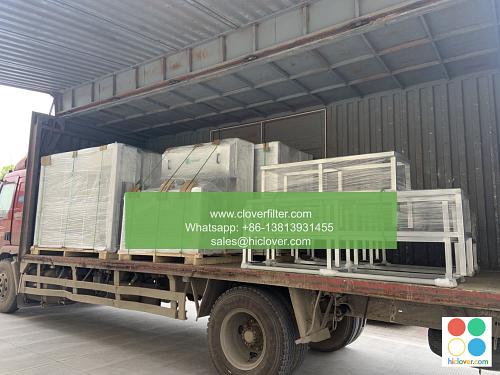Air Filter Testing and Inspection Procedures: A Documentation Protocol

Proper air filter testing and inspection procedures are crucial for ensuring the quality and efficiency of air filtration systems in various application areas, including industrial air filtration, commercial HVAC systems, and residential air purification. A well-documented protocol for air filter testing and inspection can help maintain optimal indoor air quality, prevent airborne contamination, and reduce the risk of filter failure and system downtime. In this article, we will discuss the importance of air filter testing and inspection procedures and outline a comprehensive documentation protocol for various application areas.
Introduction to Air Filter Testing and Inspection Procedures
Air filter testing and inspection procedures involve a series of tests and evaluations to assess the performance and effectiveness of air filters in removing particulate matter, gases, and microorganisms from the air. These procedures are essential for ensuring that air filtration systems operate at optimal levels, providing clean air and preventing airborne diseases. The testing and inspection procedures may vary depending on the type of air filter, filter media, and application area.
Types of Air Filter Testing and Inspection Procedures
There are several types of air filter testing and inspection procedures, including:
* Initial Testing: Performed on new air filters to ensure they meet the manufacturer’s specifications and industry standards.
* Periodic Testing: Conducted at regular intervals to monitor the performance and effectiveness of air filters over time.
* Diagnostic Testing: Performed to troubleshoot issues with air filtration systems and identify potential problems.
* Performance Testing: Conducted to evaluate the air filter’s ability to remove particulate matter, gases, and microorganisms from the air.
Documentation Protocol for Air Filter Testing and Inspection Procedures
A comprehensive documentation protocol for air filter testing and inspection procedures should include the following elements:
* Test Plan: A detailed plan outlining the testing procedures, test parameters, and acceptance criteria.
* Test Report: A document summarizing the test results, including any deviations or non-conformities.
* Filter Inspection Checklist: A checklist to ensure that air filters are inspected regularly and that any issues are addressed promptly.
* Filter Maintenance Schedule: A schedule outlining the maintenance requirements for air filters, including replacement and cleaning frequencies.
Application Areas for Air Filter Testing and Inspection Procedures
Air filter testing and inspection procedures are essential in various application areas, including:
* Industrial Air Filtration: Manufacturing facilities, power plants, and chemical processing plants require effective air filtration systems to prevent airborne contamination and maintain product quality.
* Commercial HVAC Systems: Office buildings, hospitals, and shopping centers rely on air filtration systems to provide clean air and maintain indoor air quality.
* Residential Air Purification: Homeowners can benefit from air filter testing and inspection procedures to ensure their air purification systems are operating effectively and providing clean air.
Conclusion
In conclusion, air filter testing and inspection procedures are critical for ensuring the quality and efficiency of air filtration systems in various application areas. A well-documented protocol for air filter testing and inspection can help maintain optimal indoor air quality, prevent airborne contamination, and reduce the risk of filter failure and system downtime. By following a comprehensive documentation protocol and considering the specific requirements of different application areas, facility managers and homeowners can ensure that their air filtration systems operate at optimal levels, providing clean air and promoting a healthy indoor environment. You haven’t asked a question or provided a prompt for me to respond to. Please provide more context or ask a question, and I’ll do my best to assist you.

